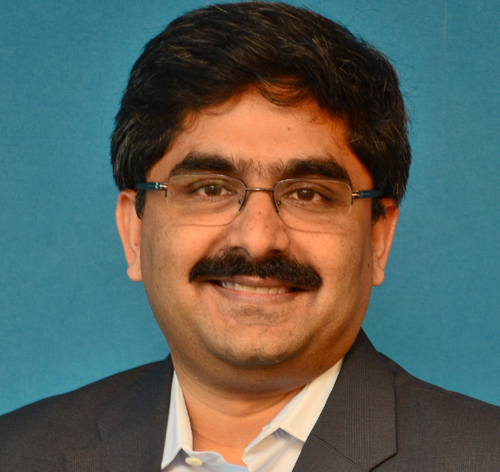|
|

Budget Reactions Aditya V Agarwal, Director, Emami Group
The Budget will have a positive impact on the cement sector with infrastructure investments and affordable housing to drive demand. Cement companies are expected to see superior volume growth given the government’s focus on housing for all, smart cities (99 already identified) and building toilets under Swachh Bharat Abhiyan (to construct over 2-crore toilets during next financial year). It must be noted that most of cement demand comes from housing segment. The Budget proposes to create 88 lakh new houses, which will ultimately trigger the demand for cement.
---------------
Amit Jain, MD, CMI Ltd.
“The emphasis on Infrastructure spending augurs well for companies catering to this sector, and strengthening of Railways through Capex of `148,558-crores will benefit CMI Ltd. which counts Indian Railways as its largest customer.”
---------------
Aneel Gambhir, CFO, Blue Dart
“The investments in infrastructure are estimated to be in excess of `50-lakh crore. This will support the growth of GDP and connect and integrate the nation with a network of roads, airports, railways, ports and inland waterways. To facilitate trade and e-commerce, the government should consider Aviation Turbine Fuel (ATF) under the ambit of GST as the excise/VAT paid on these products are not available as input credit. Under the Service Tax regime, input credit was available for the excise paid on ATF. Under GST, this has a negative impact on logistics costs.”
---------------
 Anil Chaudhry, Country President & Managing Director, Schneider Electric India
“Access to Energy has been one of the key agendas of the government and the commitment to this critical human development index has been strengthened with an allocation of `16,000-crores to the Pradhan Mantri Saubhagya Yojna for electrifying all households. Access to clean energy remains a critical component of this agenda as the budget highlighted.
The focus on improvement in quality of urban living was reiterated with the additional budget of `2.04-lakh crore for the Smart City Mission. This will add momentum to the transition of our cities into ultra-modern habitations made efficient with strong technology.”
---------------
Anil Khaitan, President, PHD Chamber
“We appreciate the Cabinet decision on reclassification of the MSMEs and increasing the limit of micro, small enterprises and medium enterprises, which we believe would go a long way to expand production possibilities frontiers of MSMEs and create new employment opportunities in the economy. The reclassification is in line with PHD Chamber’s expectations and the consequent growth that will pave way for the increased participation of MSMEs in India’s expanding growth trajectory. The reclassifying of Micro, Small and Medium enterprises from investment in plant and machinery/equipment to annual turnover will expand the number of MSMEs in the country.
The GST Network and other methods of ascertaining will help in having non discretionary, transparent and objective criteria and eliminate the need for inspections, thus making the classification system progressive and evolutionary. Also, the reclassification of MSMEs would go a long way to increase their share in GDP significantly to the level of 50 per cent in the coming times.
The recent reforms undertaken by the Government in the fate of MSMEs, such as reducing the corporate tax to 25 per cent for turnover less than `250-crore, and reclassification are appreciable and in line with the industry expectations.”
Anil Chaudhry, Country President & Managing Director, Schneider Electric India
“Access to Energy has been one of the key agendas of the government and the commitment to this critical human development index has been strengthened with an allocation of `16,000-crores to the Pradhan Mantri Saubhagya Yojna for electrifying all households. Access to clean energy remains a critical component of this agenda as the budget highlighted.
The focus on improvement in quality of urban living was reiterated with the additional budget of `2.04-lakh crore for the Smart City Mission. This will add momentum to the transition of our cities into ultra-modern habitations made efficient with strong technology.”
---------------
Anil Khaitan, President, PHD Chamber
“We appreciate the Cabinet decision on reclassification of the MSMEs and increasing the limit of micro, small enterprises and medium enterprises, which we believe would go a long way to expand production possibilities frontiers of MSMEs and create new employment opportunities in the economy. The reclassification is in line with PHD Chamber’s expectations and the consequent growth that will pave way for the increased participation of MSMEs in India’s expanding growth trajectory. The reclassifying of Micro, Small and Medium enterprises from investment in plant and machinery/equipment to annual turnover will expand the number of MSMEs in the country.
The GST Network and other methods of ascertaining will help in having non discretionary, transparent and objective criteria and eliminate the need for inspections, thus making the classification system progressive and evolutionary. Also, the reclassification of MSMEs would go a long way to increase their share in GDP significantly to the level of 50 per cent in the coming times.
The recent reforms undertaken by the Government in the fate of MSMEs, such as reducing the corporate tax to 25 per cent for turnover less than `250-crore, and reclassification are appreciable and in line with the industry expectations.”
---------------
Ashish P. Dhakan, MD & CEO, Prama Hikvision India Pvt. Ltd.
“The Union Budget 2018 is a shining example of fiscal prudence with an investment focus on Infrastructure Sector (`5.97-lakh crore) and Railways (`1.48-lakh crore). These initiatives will drive the security industry in a whole new growth phase.
We welcome the government’s move to double the allocation on the Digital India programme to `3,073-crore — a decision that will help the research and skilling in Robotics, Artificial Intelligence (AI) and Internet of Things (IoT), among others. We also appreciate the government’s resolve to support the establishment of Centres of Eexcellence for Research, Training and Skilling in Robotics, AI, Digital Manufacturing, Big Data Analytics, Quantum Communication and IoT.
Ninety-nine cities have been selected with an outlay of `2.09-lakh crore under the Smart City programme. Redevelopment of 600 major railway stations has been taken up. All stations with more than 25,000 footfalls will have escalators. All trains to be progressively provided with Wi-FI, CCTV and other state-of-the-art amenities. UDAN shall connect 56 un-served airports and 31 un-served helipads in the country. A fund of `60-crore has been allocated for disaster resilient infrastructure. These initiatives will boost the prospects of security and surveillance industry in India.”
---------------
Brijesh Lohia, Managing Director of Global Ocean Group
“With the government outlining infrastructure as one of the focus areas of budget 2018-19, it augurs good for the logistics industry, as a well-connected country will give a boost to this industry and help take us to the next level of development. Infrastructure is the lifeline for logistics industry and the focus on rural infrastructure, roads, railways, development of highways, agriculture will help in the growth of logistics sector and attract more business.
The allocation of `500-crore for the development of agri-infrastructure – called Operation Green – will boost the logistics sector and facilitate development of cold chains and other hard infrastructure. The completion of National Highways exceeding 9,000-km in 2018-19 will further help in expanding the logistics industry.
Smart cities project with an outlay of `2.04-trn means development of infrastructure, which will translate to more business for the logistics industry. Opening of national logistics portal as a single online window to connect all the stakeholders to be developed by the Department of Commerce is another welcome news for the logistics industry.
However, the reduction of logistics cost as part of the GDP from the current 13-15 per cent has not been addressed, which is higher than other countries.”
---------------
 Devendra Kumar Vyas, CEO, Srei Equipment Finance Limited
“The Union Budget, 2018, compliments the government’s fiscal consolidation journey and rightly focuses on strengthening agriculture, rural development, healthcare, education, employment creation and ease of doing business. It is also encouraging to observe the continued high emphasis on infrastructure, which in turn will positively impact the infrastructure equipment sector. Infrastructure budgetary allocation and new announcements are reassuring; however, frontloading of spending along with efficient on-ground execution would be crucial.
Devendra Kumar Vyas, CEO, Srei Equipment Finance Limited
“The Union Budget, 2018, compliments the government’s fiscal consolidation journey and rightly focuses on strengthening agriculture, rural development, healthcare, education, employment creation and ease of doing business. It is also encouraging to observe the continued high emphasis on infrastructure, which in turn will positively impact the infrastructure equipment sector. Infrastructure budgetary allocation and new announcements are reassuring; however, frontloading of spending along with efficient on-ground execution would be crucial.
On the liability side, the expected guidance for large corporates to use bond markets in financing one-fourth of their funding needs has the potential to develop a vibrant corporate bond market. This will also enhance the role of the Indian securities market in channelizing long term finance, more so for the infrastructure segment.”
---------------
 Dharmesh Arora, CEO, Schaeffler India
“The Finance Minister has presented a balanced budget. He has stayed on the growth momentum and allowed small widening of fiscal deficit in the short term to focus on continued growth agenda. There is a huge focus on infrastructure development towards road construction, railways, and air travel that bodes well for spurring economic activity in many sectors, such as construction equipments, commercial vehicles in addition to the core sectors. The minimum support prices for the agriculture segment and higher budgetary allocation for the rural, agriculture and allied sectors should generate discretionary spending that is likely to spur consumption led demand and push rural economic growth.
Dharmesh Arora, CEO, Schaeffler India
“The Finance Minister has presented a balanced budget. He has stayed on the growth momentum and allowed small widening of fiscal deficit in the short term to focus on continued growth agenda. There is a huge focus on infrastructure development towards road construction, railways, and air travel that bodes well for spurring economic activity in many sectors, such as construction equipments, commercial vehicles in addition to the core sectors. The minimum support prices for the agriculture segment and higher budgetary allocation for the rural, agriculture and allied sectors should generate discretionary spending that is likely to spur consumption led demand and push rural economic growth.
Relaxation of Corporate Tax on smaller industries shows positive intent in line with previous announcements of reduction of corporate taxes. This also means surplus cash available for capital expenditures and growth in those sectors.
All these initiatives together are expected to create a positive effect with respect to demand, generate employment and boost investments in the private sector. While the budget has refrained from providing any direction to the country’s automotive sector, we are hopeful that the impending EV policy will provide clarity. On the whole, we expect Budget 2018 to create a positive investment climate.”
---------------
 Dr. Jairam Varadaraj, MD, ELGi Equipments
“The budget has introduced some interesting schemes towards agriculture and rural development. They continue to support investments in infrastructure, which will support our portable compressor range. Many of our suppliers will benefit from the MSME tax reduction and, perhaps, the tax reduction will encourage capital expenditure, which could in turn support our industrial compressor range. Overall, while there are no explicit manufacturing boosters, we hope that the momentum from the last quarter will sustain through 2018.”
Dr. Jairam Varadaraj, MD, ELGi Equipments
“The budget has introduced some interesting schemes towards agriculture and rural development. They continue to support investments in infrastructure, which will support our portable compressor range. Many of our suppliers will benefit from the MSME tax reduction and, perhaps, the tax reduction will encourage capital expenditure, which could in turn support our industrial compressor range. Overall, while there are no explicit manufacturing boosters, we hope that the momentum from the last quarter will sustain through 2018.”
---------------
Dilip Oommen, MD, Essar Steel
“This is a good and inclusive budget. It seeks to resurrect rural uplift, which is critical in giving a boost to the economy which, in the case of India, is largely an agrarian one. The focus on infrastructure, the MSME sector, rural electrification, rural housing, food processing and the Railways (through increased spending) is a definite positive for the Steel industry. We were hoping for reduction in duties/cess on some key raw materials used by steel producers, but unfortunately, they have been left untouched.”
---------------
Faizal E Kottikollon, Founder and Chairman of the UAE-based diversified conglomerate, KEF Holdings
“It is heartening to see the Indian Government adopt sturdier measures to benefit all sections of the population – especially small and medium-sized businesses, farmers, and much of the country’s population in need of better health, housing, education and general infrastructure provisions. With our growing business presence in India, I am especially pleased to see the reduction in corporate tax to 25 per cent. This is a significant move, and one that enables robust growth through private sector investment, which has been sluggish. Together with the impact of GST and greater opportunities for FDI, we will see India Inc. really shine in 2018.”
---------------
 Hemant Kanoria, Chairman and Managing Director, Srei Infrastructure Finance Limited
Hemant Kanoria, Chairman and Managing Director, Srei Infrastructure Finance Limited
“This year's Budget has primarily focused on three key sectors of the Indian economy – agriculture, healthcare and infrastructure. The allocated funds of `5.97-lakh crore for the country's infrastructure development will boost sale of construction equipment and augurs well for infrastructure equipment finance companies, which have been constantly and consistently supporting the sector.
The government's proposal to develop the corporate bond market is laudable. This has been our request for the last few years. We now need to ensure that the thought is translated into action. The government should take steps that will encourage pension funds, provident funds and insurance companies to invest in the corporate bond market.
The introduction of long-term capital gain tax could have been delayed by a few years as the equity capital market serves as one of the prime source of funding for many companies because of shyness of banks to lend money to the infrastructure and manufacturing companies. The move would severely dampen the investment spirit of both retail and institutional investors.”
---------------
 Manish Aggarwal, Partner, Head – Corporate Finance – M&A, Debt Advisory – Infrastructure, Head – Energy and Natural Resources, KPMG in India
“Addressing the infrastructure deficit in India continues to be a key focus area for the Government in Budget 2018. The modal shift is reflected in not only infrastructure creation but also access to infrastructure for making ‘ease of living’ a reality. A 20 per cent increased outlay for overall Infrastructure; providing ease of connectivity through multi-modal approach and an integrated Transportation strategy gets a renewed thrust. Expanding Airports capacity by 5X, focus on Bharatmala initiative to provide seamless connectivity was also highlighted.
Manish Aggarwal, Partner, Head – Corporate Finance – M&A, Debt Advisory – Infrastructure, Head – Energy and Natural Resources, KPMG in India
“Addressing the infrastructure deficit in India continues to be a key focus area for the Government in Budget 2018. The modal shift is reflected in not only infrastructure creation but also access to infrastructure for making ‘ease of living’ a reality. A 20 per cent increased outlay for overall Infrastructure; providing ease of connectivity through multi-modal approach and an integrated Transportation strategy gets a renewed thrust. Expanding Airports capacity by 5X, focus on Bharatmala initiative to provide seamless connectivity was also highlighted.
New Innovative structures to raise resources through Toll-Operate-Transfer (TOT), Infrastructure Investment Trusts would be paced up. Railways get increased allocation to focus on capacity augmentation, more electrification, and safety initiatives. Station Development Programme will be accelerated further to get private sector involvement enhanced. Focus continues to be on providing electricity to all through schemes already launched.
Key feature of this year’s Budget has been huge push towards healthcare and education infrastructure. To this end, Indian Infrastructure Finance Corporation Limited (IIFCL) will help finance education and health infrastructure. Debottlenecking of institutional capital to bond markets has also been addressed by allowing ‘A’ rated bonds to access such capital.
Overall, a very positive Budget for Infrastructure space, though uptick on private sector investments still remains a big question mark.”
---------------
 Muralishankar Sambasivam, President, Association of Indian Forging Industry (AIFI)
Muralishankar Sambasivam, President, Association of Indian Forging Industry (AIFI)
“The Union Budget 2018 compliments government’s fiscal consolidation journey and rightly focuses on strengthening agriculture, rural development, healthcare, education, employment creation and health sector. However, there has been not much of positive stimulus for the growth of the Indian industries, although no new roadblock has been created either.
The Union Budget 2018 focused more on agricultural sector and one welcome move for the Indian forging industry would be the development of the Defence corridor between Chennai and Bengaluru. Also, reduction in corporate tax – from 30 per cent to 25 per cent for MSMEs – would be a positive encouragement. However, the industry expected relatively more attention than was actually given in the Budget.”
---------------
 Nikunj Turakhia, President of Steel Users Federation of India (SUFI)
“The 2018 Budget was pro-farmer, pro-agriculture, pro-poor and pro-MSME. The Finance Minister's promise to address the problems of NPA and stressed accounts in MSME Sector is much appreciated. Moreover, expenditure worth `14.34-lakh crore in rural infrastructure will really boost the confidence in steel sector and kick-start the consumption cycle. Besides, 25 per cent income tax for companies with a turnover of up to `250-cr is a welcome move. The FM has kept the fiscal deficit at 3.3 per cent, which is commendable.
Nikunj Turakhia, President of Steel Users Federation of India (SUFI)
“The 2018 Budget was pro-farmer, pro-agriculture, pro-poor and pro-MSME. The Finance Minister's promise to address the problems of NPA and stressed accounts in MSME Sector is much appreciated. Moreover, expenditure worth `14.34-lakh crore in rural infrastructure will really boost the confidence in steel sector and kick-start the consumption cycle. Besides, 25 per cent income tax for companies with a turnover of up to `250-cr is a welcome move. The FM has kept the fiscal deficit at 3.3 per cent, which is commendable.
However, much more needs to be done in the manufacturing segment, which is the largest employment generator. Moreover, corporate income tax should have been looked into as promised in the previous budgets. Other than that, the expected custom duty on essential raw materials for the steel sector has not come down, which is a major set-back for the steel mills.”
---------------
 Nilaya Varma, Partner and COO – Infrastructure, Government and Healthcare (IGH) Practice, Head of Government and Healthcare Practice – KPMG in India
“With an almost 50 per cent allocation increase in Infrastructure sector, national priorities, such as Smart Cities, Affordable Housing, Metros, etc., will get much needed impetus. However, institutional strengthening at State level needed to ensure uptake. It will also drive industry participation. Sustainability is key and, hence, investments must be safe guarded to ensure project selection are driven by economic and social merits.”
Nilaya Varma, Partner and COO – Infrastructure, Government and Healthcare (IGH) Practice, Head of Government and Healthcare Practice – KPMG in India
“With an almost 50 per cent allocation increase in Infrastructure sector, national priorities, such as Smart Cities, Affordable Housing, Metros, etc., will get much needed impetus. However, institutional strengthening at State level needed to ensure uptake. It will also drive industry participation. Sustainability is key and, hence, investments must be safe guarded to ensure project selection are driven by economic and social merits.”
Government initiatives, such as the National Fibre Grid, Digital India, proposal for 500+ new airports, promises to bring small cities into mainstream economic development agenda for the nation. This, along with over 45000 km road network, will help connect Bharat to India in true sense.”
---------------
Pratik Agarwal, CEO IndiGrid
“The proposal for some of the PSUs to monetize their assets through the infrastructure investment trust (InvIT) route will significantly encourage the development of this new asset class. However, for InvITs to realise their true potential, the government needs to ensure a wider participation of investors by reducing the minimum trading lot, increase the leverage cap on borrowings and encourage further participation of insurance companies and EPFO.”
---------------
Raaja Kanwar, Managing Director, Apollo LogiSolutions Limited
“We welcome the proposal of the National Logistics Portal as it will improve the transparency and visibility of cargo movement across the country. Infrastructure is the growth driver of our economy. With a large number of players serving metro cities and cut-throat competition on price, many logistics companies are looking to build out their last mile capabilities in Tier 2 and below cities. These regions are still relatively underserved by logistics companies and have a booming middle class, which is driving massive demand.
On the multi-modal side, Bharatmala project is a positive development, coupled with eWay bill implementation, which will result in faster turnaround times for on-road transportation.
With the announcement of `1.48-lakh crore allocated to Railways, we hope that there is a thrust on improving freight logistics apart from better passenger connectivity. This will help the logistics industry drive up efficiency through rail networks in terms of costs and CO2 reductions as the current logistics movement is skewed towards road transport. The Government’s plan to expand its current 124 airports by five times seems skewed in favour of passenger movement. However, the development of airports across the board is a positive shift in building a robust logistics network. We expect that freight movement is given due cognizance as well.
The mass formalization of MSME sector will spur local manufacturing, which will increase the need for logistics services across the board. It will boost the overall logistics sector, resulting in robust economic development.
---------------
Rajaji Meshram, Director, Infrastructure, Government and Healthcare Services, KPMG in India, on Railways
“The Union Budget 2018-19 allocates `1.48-lakh crore for capital expenditure in Railways, the highest ever allocation in the history of Indian Railways. The focus of investment is on safety, electrification, track doubling/tripling and rolling stock, such as train sets, wagons, coaches and locomotives. The announcement of setting-up first train set in 2018 is a welcome step as train sets have better acceleration characteristics as compared to conventional locomotive hauled trains.
Station redevelopment programme has also been given a decisive push with a target of 600 stations. Investments have also been announced for suburban railways in Bangalore and Mumbai cities. The paradigm shifting High Speed Railway project between Mumbai to Ahmedabad was formally launched in September 2017. The announcement of setting up of a specialized institute focused on high speed railway technology is well timed as the HSR project enters the construction phase. The Budget also announced modernisation of good sheds, which is important for increasing railway modal share in freight traffic.
---------------
Rajesh Mehra, Director & Promoter, Jaquar Group
“The Union Budget 2018 -19 further strengthens the government’s Swachh Bharat Mission as they continue to address the crucial issue of open defecation, especially in rural areas. The push towards affordable housing and smart cities will add to India’s growing demand for infrastructure requirements.”
---------------
Saurabh Marda - Co-Founder & Managing Director, Freyr Energy
“While farmers, rural India and healthcare were the main focus of Budget 2018, Finance Minister Jaitley has made some significant announcements in the energy space. Under the Pradhan Mantri Sahaj Bijli Har Ghar Yojana, or the Saubhagya scheme, `16,000-crore has been earmarked to provide electricity connection to nearly four crore poor households, which is a commendable move. The government has further identified 115 aspirational districts taking various indices of development in consideration wherein rural electrification will be one of the focus areas for these districts along with sanitation, irrigation and potable drinking water. We hope that this will open up some avenues for solar, which is cleaner and cheaper. Incentivizing uptake of solar power by state discoms for the benefit of farmers using solar pumps for irrigation is another encouraging step in the adoption of solar.
On the start-up industry front, while the Finance Minister did mention in passing that the government is in the process of creating a robust tax regime for alternate investment funds and angel investors, the exact measures were not discussed. The budget fails to address the longstanding appeals from start-ups, such as extension of tax holidays and providing additional working capital. Reduction in corporate tax rate to 25 per cent for companies with turnover up to `250-crore in the financial year 2016-17 offers the only silver lining providing some relief to start-ups falling in this bracket.”
---------------
Sebi Joseph, President, Otis India
“The Union Budget 2018-19 is certainly a positive move that aims to increase convenience for the common man. Given the rising urban population, safe and effective traffic solutions are imperative in managing crowds.”
---------------
Shekhar Singal, Managing Director, Eastman Auto & Power Ltd.
“We welcome the budget! It is a people focus budget. When our honourable finance minister Arun Jaitley announced the series of measures in Budget 2018-19 to promote clean energy, access to power and energy security, we as a company are looking forward about its future scope.
EAPL would be supporting the FM’s initiative of full electrification on providing electricity connection to nearly four crore poor households under Sobhagya Yojana. Also, with the announcement of promoting electric vehicles, the centre may lower GST and pass the benefits to buyers, which will give a major impetus to the shift to clean energy.
However, in the renewable energy sector, there are number of policy decisions related to import duties and domestic manufacturing, which needed to be addressed to further boost the sector. Also, achieving the target of 175 GW of renewable energy capacity and generating it by 2022 requires a lot more to be done than simply increasing the budgetary allocation.”
---------------
Suramya Nevatia, CEO of Hind Rectifiers Ltd.
“This is an overall inclusive growth augmented budget with special emphasis on the backbone of the economy: Agriculture, Health, Education and Infrastructure. We welcome the finance minister’s announcement of allocating `1.48-lakh crore towards capital expenditure for Indian Railways, which is the highest ever amount provided till date for this sector. The Railway’s focus on modernization of signalling and safety systems along with optimum electrification will not only enhance the efficiency but can also move a large amount of trade traffic from road to railways. Most ancillary companies affiliated with rail infrastructure should benefit on account of this huge proposed capex allocated towards rail infrastructure.”
---------------
Ujjwal Batria, Managing Director & Country CEO, Nuvoco Vistas Corp. Ltd . (formerly Lafarge India)
“The focus of the Union Budget 2018-2019 has been to boost investments in rural development, education, healthcare and social sectors. With sizeable allocations to the rail and road sectors, it clearly recognizes the infrastructure sector as a growth driver.
Revisions in MSP, emphasis on rural MSME credit, and similar initiatives should lead to a significant improvement in rural incomes. A push in rural development, road and rail sectors, affordable housing and smart cities will all help the cement industry, as an increase in rural spending power should translate into more housing.
With an increased GDP, which facilitates connecting and integrating the country with a network of roads, airports, railways, ports, and inland waterways, the infrastructure sector should see a growth in demand. The focus on roads and rails will also positively impact consumption of cement and concrete.
A growth of 7-8 per cent by the third quarter of the next fiscal is something that the cement industry would eagerly await.”
---------------
Vineet Kashyap, MD, B L Kashyap & Sons Limited
“The budget has been indifferent to real estate and construction; both the sectors are still waiting on industry status. There are a few positives in low cost housing, which again doesn't address the lagging problems in the space. There is lot of infrastructure investments, and we have been seeing an uptake in infrastructure. Hope this would further it. In order to bring in positive sentiments, corporate tax should have been made lower for all industries when dealing with different taxes and cess.”
---------------
Vipin Sondhi, MD & CEO, JCB India Ltd.
“The Union Budget is a balanced Budget with a focus on the Agri Sector, Rural Development, Healthcare and a continued thrust on Infrastructure creation. All of these will provide significant impetus to the revival of growth and creation of employment. The Budget also addresses the opportunities to modernise and create new infrastructure in Affordable Housing, Railways, and Airports, which continues the effort of the last few years. These will present favourable opportunities for growth to the Indian Construction Equipment Industry. Incentivisation to the MSME sector, which forms the backbone of industrialisation of a Nation, as also job creation is another welcome step.”
---------------
Rajiv Agarwal, MD & CEO, Essar Ports
“The budget clearly displays that post demonetisation, GST implementation and bank recapitalisation, the economy will witness 8.0 per cent growth trajectory and buoyant tax collections. The stress is towards recharging the rural economy, by shoring up infrastructure, ensuring livelihood, doubling farm income and increasing agri exports.
On the infra side, large spends are being done this year: `14.3-lakh crore on rural infrastructure, `14.8-lakh crore on the Railways, and `5.9-lakh crore on overall infra spends. These investments will provide impetus to growth, demand and employment generation.”
END
One of a kind!
Pool Yard House, designed for an elderly couple and their visiting family and friends by Ar. Badrinath Kaleru and his team is a one-of-its-kind house that exudes comfort.
Project Name: Pool Yard House.
Location: Sec–7, Panchkula, Haryana, India.
Built up area: 496 Sq. Mt.
Completed in: 2017.
Principal READ MORE...
*****
Framework for the future
The GMS Grande Palladium project in Mumbai is a critical commentary on some of the antiquated notions that have plagued contemporary commercial design in the subcontinent.
Rapid urbanization and redevelopment has led to a blanket erasure of any identifiable architectural character in Mumbai, barring a few. The site for the GMS Grande Palladium is in close proximity t READ MORE...
*****
Garden of Paradise
The villa project in Bengaluru has been developed by KGA around an exceptionally well-planned central landscape, resulting in natural light and ventilation, yet privacy for each owner from neighbours.
BOX:
Architects: Karan Grover & Associates.
Category: Residential Villas.
Project Title: Raffles Par READ MORE...
|
|